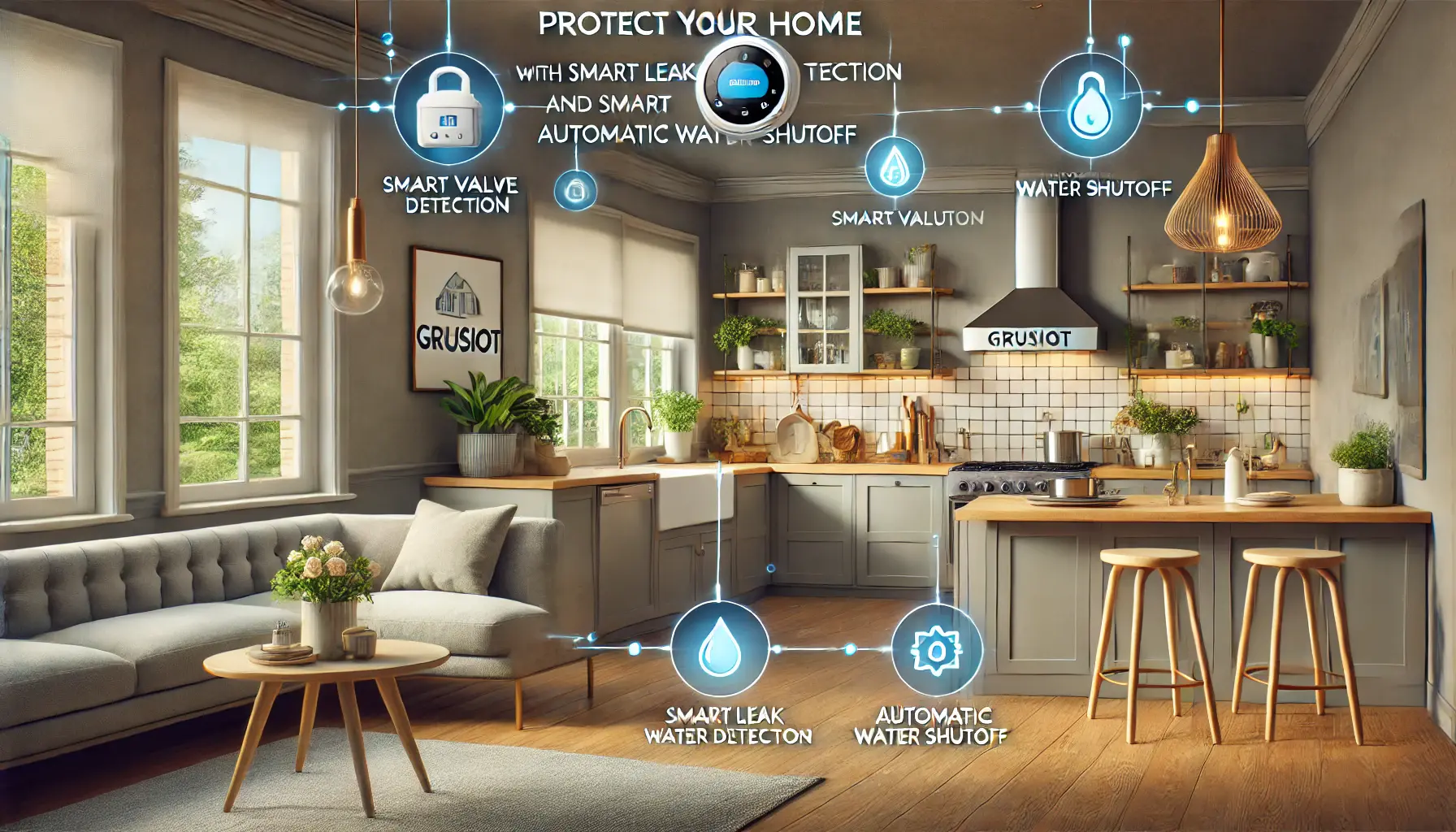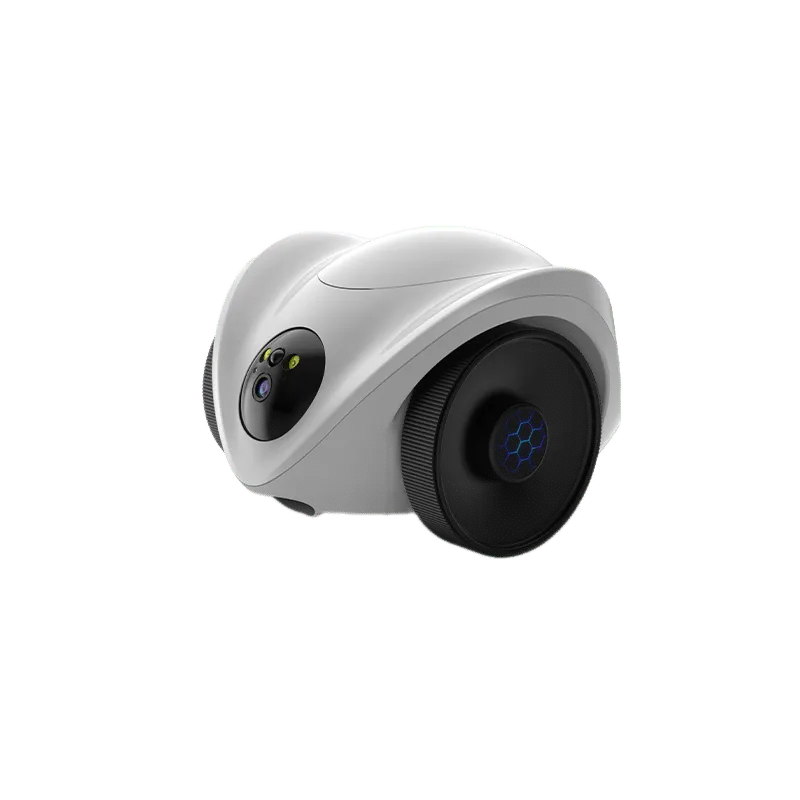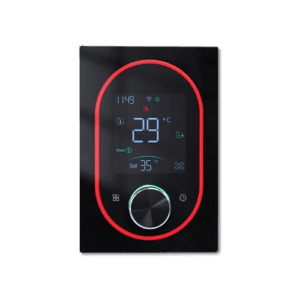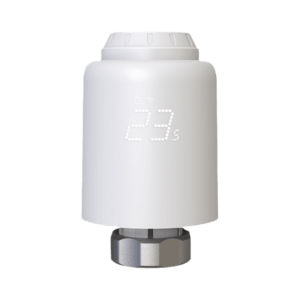With the rapid development of smart home technology, an increasing number of households are adopting various smart devices to enhance their quality of life and safety. Among these smart devices, leak detection and automatic water shutoff systems are gaining widespread attention. Water leaks not only lead to wastage of water resources but can also cause mold growth, wall corrosion, and property damage. Therefore, effectively detecting leaks and taking swift action has become a critical aspect of home safety management. The advent of smart leak detection and automatic water shutoff technology offers new solutions to address this issue.
One: Current Situation of Water Leak Issues
Water leaks are not uncommon in daily life, often caused by aging pipeline systems, loose pipe joints, and household appliance malfunctions. These issues are often difficult to detect until significant water damage occurs. Leaks not only waste water resources but can also lead to severe consequences. For instance, continuous leaks can damage walls and floors, fostering mold growth that poses health risks to family members. Additionally, large-scale leaks can cause electrical equipment short circuits, even leading to fires.
Traditional methods of leak detection mainly rely on visual inspection and regular checks. These methods are time-consuming, labor-intensive, and have many blind spots, making it challenging to detect hidden leaks promptly. With technological advancements, smart leak detection systems have emerged, utilizing efficient sensors and automated control technology to provide real-time monitoring and automatic handling of leaks, significantly improving the efficiency and reliability of household leak management.
Two: Smart Leak Detection Technology
The core of smart leak detection technology lies in its highly sensitive sensors and intelligent control systems. Modern smart leak sensors utilize advanced technologies such as ultrasonic, optical, and conductive sensors. These sensors can monitor changes in environmental moisture in real-time and transmit the data to a control unit. The control unit analyzes the data to determine if a leak is present and promptly issues an alert or takes further action.
- Types of Sensors and Their Working Principles:
- Ultrasonic Sensors: These sensors use the difference in sound wave propagation speed in air and water to detect leaks. Ultrasonic sensors are highly sensitive and stable, suitable for various environments.
- Optical Sensors: These sensors detect the presence of water through changes in light refraction and reflection. Optical sensors' advantage lies in their non-contact detection method, unaffected by environmental humidity and temperature.
- Conductive Sensors: These sensors utilize the conductive property of water to detect leaks by measuring changes in electrical current. Conductive sensors are simple in structure, cost-effective, and widely used in household leak detection systems.
- Data Collection and Processing: The data collected by the sensors is transmitted in real-time to the control unit. The control unit, using preset algorithms, analyzes the data. If abnormal moisture changes are detected, the control unit immediately issues an alert and notifies the user to take appropriate measures. Advanced smart leak detection systems also have data storage and analysis functions, allowing users to understand their household water usage and prevent potential leaks in advance.
- Components of Leak Detection Systems:
- Sensors: Responsible for detecting leaks and transmitting data to the control unit. Sensors can be installed in areas prone to leaks, such as kitchens, bathrooms, and basements.
- Control Unit: The brain of the system, responsible for receiving data from sensors, analyzing it, and determining if a leak is present. Once a leak is detected, the control unit issues an alert and can work in tandem with the automatic water shutoff system to close the water source promptly.
- Notification System: Includes mobile apps, alarms, and other methods to timely alert users of leaks. Users can view the status of the leak detection system in real-time and control the system remotely through a mobile app.
By integrating these technologies, smart leak detection systems can achieve real-time monitoring and quick response to household leaks, effectively preventing damage and providing comprehensive safety for families.
Three: Automatic Water Shutoff Technology
With continuous advancements in smart home technology, automatic water shutoff technology has become a vital tool for addressing household leak problems. An automatic water shutoff system not only cuts off the water supply upon detecting a leak, preventing further damage but also integrates seamlessly with leak detection systems, providing comprehensive water safety management for homes.
Working Principle of Automatic Water Shutoff
The core component of an automatic water shutoff system is the electric valve. This valve controls the flow of water through an electric actuator. When the leak detection system identifies a leak, the control unit sends a signal to the electric valve, instructing it to shut off the water supply, thereby preventing further spread of the leak.
- Electric Valve: Consists of the valve body and electric actuator. The valve body is a mechanical component that controls water flow. The electric actuator is an electrical device that receives signals from the control unit, driving the valve body to open or close.
- Control Signal Trigger: The control unit of the leak detection system connects to the electric valve via wired or wireless communication. Upon detecting a leak, the control unit sends a close signal to the electric valve, which then executes the shutoff operation to cut off the water supply.
Installation and Configuration of Automatic Water Shutoff
To ensure the effectiveness of the automatic water shutoff system, proper installation and configuration are crucial. Here are some key steps:
- Installation Location: Typically, the automatic water shutoff valve is installed on the main water line to quickly cut off the water supply to the entire home when a leak is detected. The installation location should be easy to maintain and inspect, ensuring that the electric valve is not affected by environmental factors.
- Integration with Leak Detection System: The automatic water shutoff valve needs seamless integration with the leak detection system. Ensure the control unit can stably communicate signals to the electric valve during installation. Communication can be achieved through wired connections (e.g., cables) or wireless connections (e.g., Wi-Fi, Zigbee).
Advantages of Automatic Water Shutoff
Automatic water shutoff technology offers significant advantages in household leak protection:
- Immediate Response, Reduced Water Loss: When the leak detection system identifies a leak, the automatic water shutoff valve can cut off the water supply within seconds, significantly reducing water loss and property damage.
- Remote Control and Monitoring: Users can remotely control the automatic water shutoff valve via a smartphone app, monitoring household water usage in real-time and manually shutting off the water supply if necessary.
Four: Product Introduction and Integration Solutions
In this section, we will introduce Grus’s smart water valve leak detector and water immersion alarm in detail and explore how to integrate these products into a household leak detection and automatic water shutoff system.
Introduction to Grus Products
- Smart Water Valve Leak Detector (Product Link)
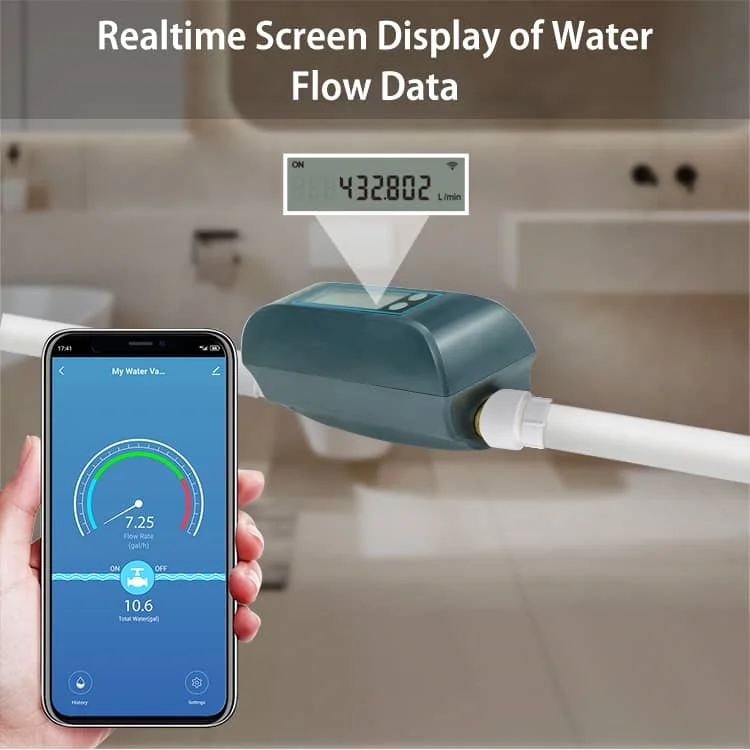
- Features and Characteristics: Grus’s smart water valve leak detector offers high-sensitivity leak detection, capable of real-time monitoring of pipeline leaks. Upon detecting a leak, the system promptly issues an alert and shuts off the water supply, preventing further water loss. The product also supports remote monitoring, allowing users to view the valve status anytime via a mobile app.
- Usage Scenarios and Installation: This product is suitable for homes, offices, and industrial environments. It is easy to install by mounting the water valve leak detector on the main water pipeline and completing the configuration via the mobile app.
- Water Immersion Alarm (Product Link)
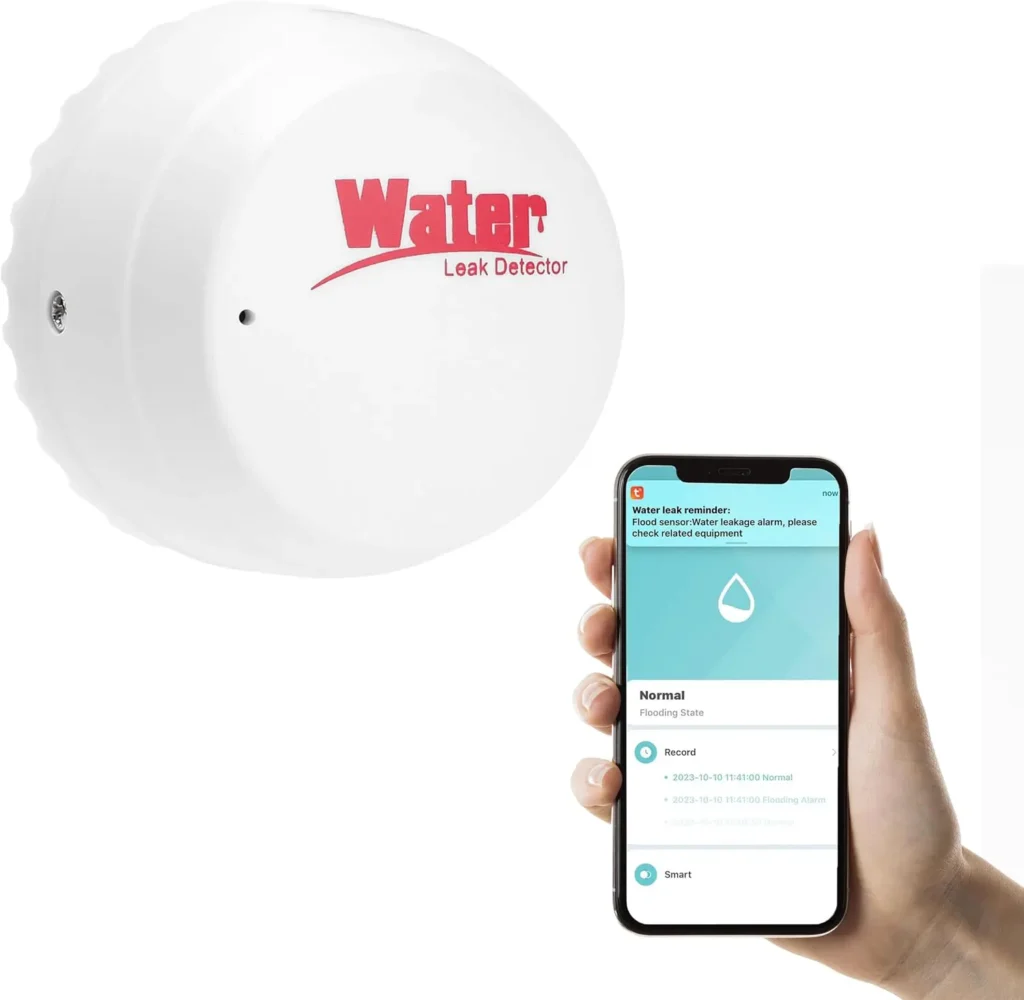
- Features and Characteristics: Grus’s water immersion alarm detects surface water accumulation and immediately issues audible and visual alarms to alert users to take action. The compact and convenient device is suitable for kitchens, bathrooms, basements, and other areas prone to leaks.
- Usage Scenarios and Installation: The water immersion alarm is ideal for protecting various leak-prone areas in homes. Users need to place the alarm on the floor and ensure it connects to the leak detection system.
Integration Solutions for Grus Products
To achieve comprehensive monitoring and protection against household leaks, integrate Grus’s smart water valve leak detector and water immersion alarm to form an efficient leak detection system.
- Design of Household Smart Leak Detection System
- Sensor Placement Strategy: Place water immersion alarms in key household locations such as kitchens, bathrooms, and basements. Simultaneously, install the smart water valve leak detector on the main water pipeline to monitor the entire household water supply system.
- Connection of Control Unit and Water Valve: Transmit data from the leak detectors and alarms to the control unit. The control unit analyzes sensor data to decide whether to trigger the automatic water shutoff. Users can monitor and control the system’s status in real-time via a mobile app.
- Case Study: Operation of Grus Smart Leak Detection System
- Sensor Detects Leak: When a sensor (e.g., water immersion alarm) detects a leak, it immediately sends a signal to the control unit.
- Control Unit Issues Command: Upon receiving the leak signal, the control unit analyzes the data and decides whether to close the water supply. If necessary, the control unit sends a shutoff command to the smart water valve leak detector.
- Water Valve Automatically Shuts Off: The smart water valve leak detector executes the shutoff command, quickly closing the water supply to prevent further loss.
- User Receives Notification: Simultaneously, the control unit sends a notification to the user via a mobile app, informing them of the leak and actions taken. Users can view the specific leak location and system status through the app and take further measures if necessary.
By implementing these integration solutions, Grus’s smart leak detection system can achieve comprehensive monitoring and automatic handling of household leaks, providing reliable water safety protection for homes.
Five: Selection and Installation Advice
When choosing and installing a smart leak detection system and automatic water shutoff, several important factors need to be considered. These factors include the system’s functionality, reliability, ease of use, and after-sales service. Here are some selection and installation recommendations to help users better protect their homes from water damage.
How to Choose the Right Smart Leak Detection System
- Comprehensive Functionality: Choosing a smart leak detection system with comprehensive functionality is crucial. The system should include high-sensitivity leak sensors, reliable control units, and efficient automatic water shutoff valves. Additionally, the system should support real-time monitoring, remote control, data storage, and analysis, ensuring users can monitor their household water usage anytime.
- Brand Recommendation: When selecting a smart leak detection system, it is advisable to choose products from well-known brands such as Grus. These brands typically have good reputations and reliable product quality, offering long-term technical support and after-sales service.
- Function Comparison: Before purchasing, users should compare the functions of different brands and models in detail. For instance, Grus’s smart water valve leak detector and water immersion alarm offer high-sensitivity leak detection, support remote monitoring and control, and provide comprehensive leak protection.
Installation Considerations
- Professional Installation vs. DIY: Users can choose professional installation or DIY (Do-It-Yourself) installation for their smart leak detection system. Technically skilled users can opt for DIY installation, following the product manual and installation guide. Users unfamiliar with the installation process are advised to choose professional installation services to ensure the correct installation and configuration of the system.
- Maintenance and Upkeep: After installation, regular maintenance and upkeep of the smart leak detection system are essential. Users should periodically check the sensors and control units to ensure they are functioning correctly. Additionally, timely replacement of batteries and checking power connections are necessary to prevent the system from failing due to insufficient power.
Six: Case Analysis and User Feedback
To better understand the effectiveness of smart leak detection systems, we can obtain more information through case analysis and user feedback.
Real User Case Studies
- Case One: Kitchen Leak Incident: A user installed Grus’s water immersion alarm and smart water valve leak detector in their kitchen. One afternoon, the water immersion alarm detected a leak under the kitchen sink and immediately sent a signal to the control unit. The control unit received the signal and promptly issued a shutoff command to the water valve, successfully cutting off the water supply and preventing further water loss. The user received a leak notification via the mobile app and quickly took repair measures.
- Case Two: Basement Leak Incident: Another user installed Grus’s smart leak detection system in their basement. After a heavy rain, water accumulated in the basement. The system’s water immersion alarm detected the water and sent an alert to the control unit. The control unit immediately shut off the main water valve and notified the user. The user promptly removed the water, avoiding damage to basement equipment and furniture.
System Performance in Actual Leak Incidents
The above cases demonstrate that Grus’s smart leak detection system performs excellently in actual leak incidents. The system can quickly detect leaks, promptly shut off the water supply, and notify users via a mobile app, ensuring that homes are protected from water damage.
Learn how Grus devices work together in our complete water protection system →
Common Issues and Solutions
- Handling False Alarms: Sometimes, smart leak detection systems may issue false alarms. For example, sensors may falsely detect moisture changes, causing the system to issue an incorrect alert. Users can use the system’s historical data analysis function to determine if false alarms occurred and recalibrate or replace the sensors if necessary.
- Battery and Power Issues: Smart leak detection systems typically rely on battery power. Users should regularly check battery levels and replace batteries promptly. Additionally, ensuring stable power connections is crucial to prevent system failure due to insufficient power.
Smart leak detection and automatic water shutoff technology provide an efficient and reliable solution for household leak protection. Using highly sensitive sensors and intelligent control systems, the technology enables real-time leak monitoring and immediate action to prevent damage. Grus’s smart water valve leak detector and water immersion alarm offer comprehensive functions and high reliability, providing all-around leak protection for homes.
In summary, smart leak detection and automatic water shutoff technology enhance home safety and significantly reduce property damage caused by leaks. For any user concerned about home safety and water management, installing an efficient smart leak detection system is a wise choice. If you are interested in Grus’s products, you can learn more and purchase them through the official website (Grus Product Link).
References
- Grus Official Website (Product Link)
- Related Research and Statistical Data Sources
- Recommendations for Other Smart Home Products and Services
Through the content above, we have detailed the various aspects of smart leak detection and automatic water shutoff technology, provided selection and installation recommendations, and showcased system performance through real case studies. We hope this information helps users better protect their homes from water damage, enhancing safety and convenience in daily life.
